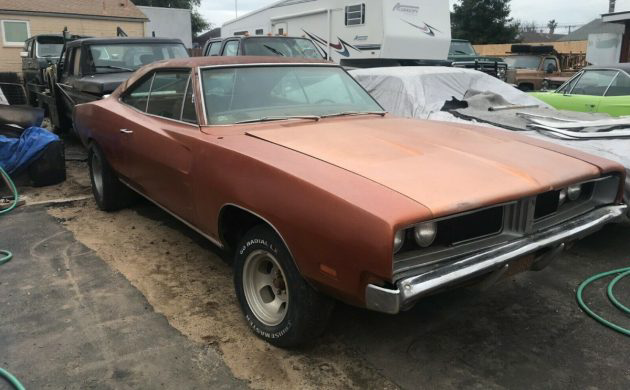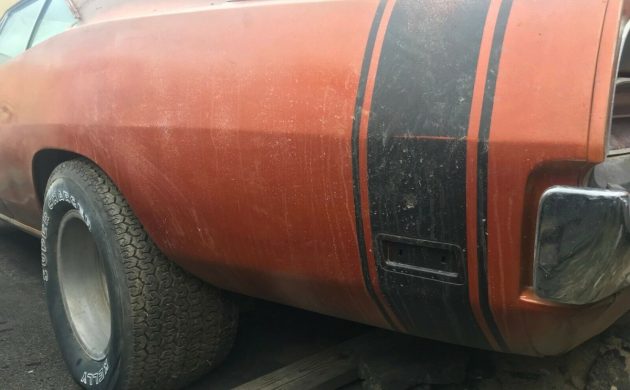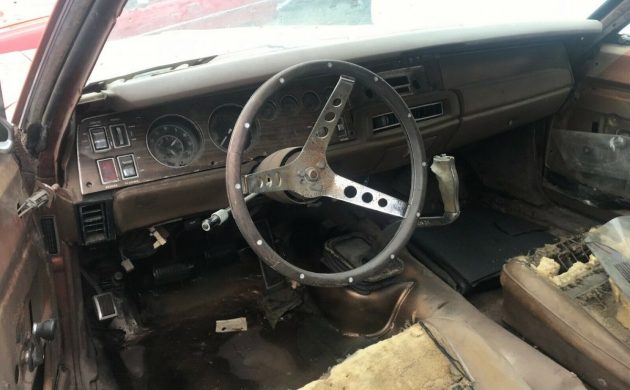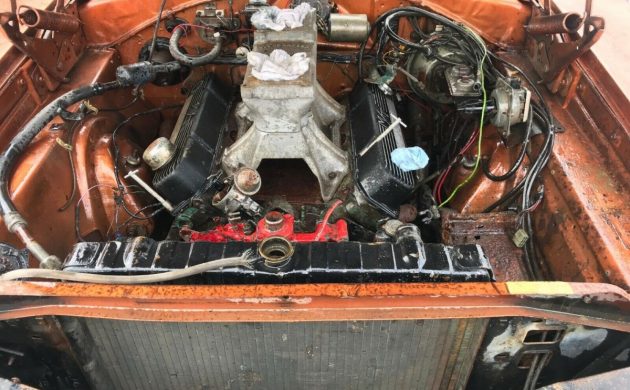The owner of this 1969 Dodge Charger SE refers to it as a good car, and it seems that there are a few people out there who agree with this assessment. After bidding opened at $10,000, it has quickly shot up to $20,000. The good news is that the reserve has been met, so the Charger is destined to soon head off to a new home. The question is whether this is likely to be your home? Located in Oakdale, California, the Charger is listed for sale here on eBay.
The owner states that he believes that the paint on the Charger is largely original, and while he refers to it as orange, I believe that it is actually Copper, which is a great color when it is fresh and shiny. If the paint is actually original, then it’s a good sign that the car hasn’t been the victim of any dodgy panel-work or repairs in the past. There is some rust to be dealt with, but the worst of this will require the replacement of the trunk pan. There is a small spot in the front floor on the passenger side that could be repaired, along with a small spot by the rear window on the same side. I have also noticed some rust in the battery tray, so that’s an area that will require some investigation. The rest of the car, including the rockers and quarter panels, look to be nice and solid.
The interior is going to require a lot of work, but there is no doubt that this was a Charger that was nicely optioned when it rolled off the production line. As well as all of the standard Charger features, including that really neat gauge cluster, the car features air conditioning, cruise control, and an 8-track player with three speakers in the dash. The owner also claims that the Charger was fitted with power windows, but I can see a very manual window winder on the driver’s door.
You look under the hood, and it should be no surprise to learn that the Charger doesn’t currently run. It is not clear whether this is the original H-Code 383ci V8, but if it is, then it has certainly been fitted with some very obvious non-original components. The engine is hooked to a 4-speed manual transmission, while the car was also specified with power steering and power disc brakes. The owner is pretty up-front on the engine. He says that it has been sitting for a long time and that it will need to be rebuilt.
The second generation of the Dodge Charger was in production from 1968 until 1970. While sales of the 1968 and 1969 models were strong, the 1970 model volumes were greatly impacted by the introduction of the Challenger Coupe. In 1969, 89,199 Chargers rolled off the line, meaning that they weren’t a particularly rare car when new. Time, rust, and hard living have all taken a toll on these numbers, and today a good one is a pretty desirable car to own. This one has the potential to be a good one, and that’s why the bidding has been so strong.







Did the pistol grip shifter come on the 69’s, or was that not until 1970? I have seen them on many earlier models in the past, but always thought they came out later…btw, love that dual quad high rise….
Flmikey, As far as I recall, pistol grip was introduced in 1970. They were on both my 70 superbee and 70 roadrunner but not on any models prior to that that I recall.
It may have come with the ‘adequate’ Inland shifter and was replaced with the popular new pistol grip Hurst. My 68 GTX came with the Inland and when the bushings needed to be replaced, I ordered a Hurst from the 69 parts book. It hit the dash on the 3rd gear shift. The chrome finish was nice, so I was leery of heating it.
68 was the last of the Inland shifters.
The hood is obviously a different colour, and he mentions replacement grill parts, he’s got some splain’n to do ,Lucy! The ’69 Charger is my favourite. To me, it’s a look that competes with any other car design, from any manufacturer, new or old.
My guess is that the original hood has been cut up to allow that tunnel ram manifold and two fours to fit, and that he just found another hood to replace it. Obviously the carbs won’t fit under that hood; in fact, I’m surprised that manifold will fit even without the carbs.
My E36 M3 has low mileage and is in mint condition and would be lucky to bring 17 grand, and probably after dealing with about 65 tire kickers claiming to know more than I do about BMWs.
So does this mean that this rather unsightly beast would get valeted ahead of my car at a hot restaurant or fancy club? That might sound superficial but I’m a little concerned about that.
FK5 burnt orange is the color. 1970 models was the first year of the hurst pistol grip (so late 69).
Cruise was not available with a manual transmission on Chrysler products of the muscle car era.
I love the stance with the fat tires out back and it’d keep the tunnel ram if it were mine.
Old street machine, maybe a bit of “freak” and I really hope it stays that way. Overkill or not that dual quad set up and those wheels represent a different era, when cruising Friday night, hanging out in the parking lots with hot machines on the prowl and pretty girls everywhere, the police always ready to bust some jerk doing burn outs across an intersection. Phrases like numbers matching or all original either didn’t exist or meant you’d better pop the hood and get busy.
Considering how much further the body sides extend out beyond the side glass on these cars, i wonder if anyone ever misjudged the width of the car, for ex., trying to “squeeze thru” a narrow 2 way side street, with catastrophic results.